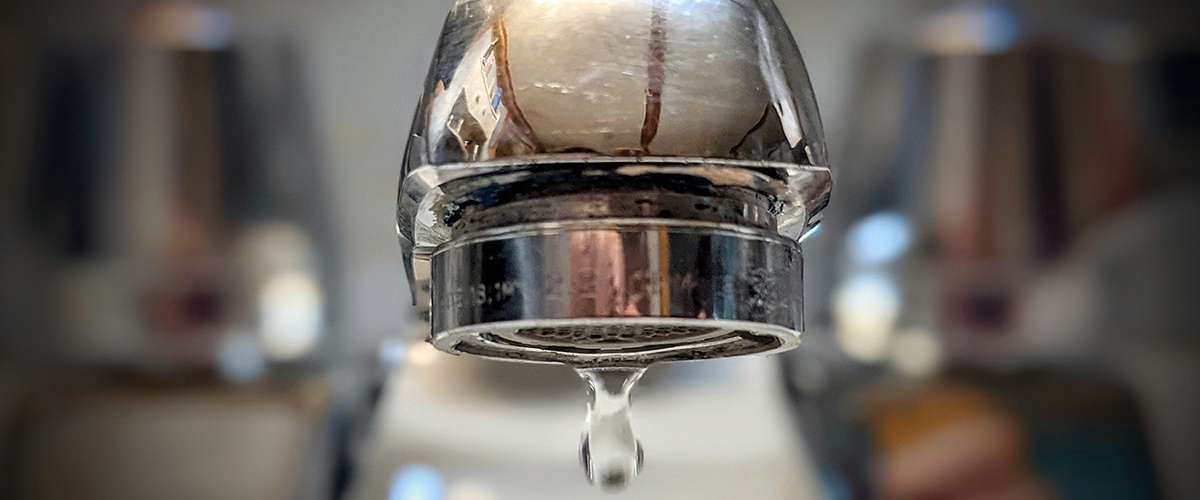Just about every person seems to have their personal opinion on the subject of Should I Repair or Replace a Leaky Faucet?.

Trickling taps may feel like a minor hassle, yet their impact goes beyond just the annoyance of the audio. From wasting water to sustaining unneeded economic expenses and health dangers, ignoring a trickling faucet can lead to numerous repercussions. In this short article, we'll delve into why it's critical to address this usual house problem quickly and effectively.
Wastage of Water
Environmental Influence
Trickling faucets add substantially to water waste. According to the Environmental Protection Agency (EPA), a single tap dripping at one drip per second can waste more than 3,000 gallons of water each year. This not only stress water sources however likewise influences communities and wildlife based on them.
Financial Expenses
Raised Water Costs
Past the environmental impact, leaking faucets can inflate water expenses substantially. The collected waste in time translates into greater energy costs, which could have been stayed clear of with timely repair services.
Possible Building Damage
In addition, prolonged dripping can result in harm to fixtures and surfaces bordering the tap. Water buildup can create staining, deterioration, and even structural problems if left ignored, resulting in additional repair costs.
Health Problems
Mold and Mildew Growth
The consistent visibility of wetness from a leaking faucet develops an excellent environment for mold and mildew development. These fungis not only jeopardize indoor air top quality however additionally posture health and wellness risks, especially for people with respiratory problems or allergic reactions.
Waterborne Diseases
Stationary water in leaking faucets can come to be a breeding place for germs and various other microorganisms, increasing the danger of waterborne diseases. Impurities such as Legionella germs flourish in stationary water, potentially bring about major ailments when ingested or inhaled.
DIY vs. Specialist Repair
Benefits and drawbacks of DIY Repair Service
While some might attempt to repair a trickling tap themselves, do it yourself repair work include their own collection of obstacles. Without proper knowledge and devices, DIY attempts can aggravate the problem or lead to incomplete repairs, lengthening the trouble.
Advantages of Hiring a Professional Plumber
Hiring a specialist plumber makes certain that the underlying root cause of the dripping tap is resolved effectively. Plumbers possess the expertise and tools to detect and repair tap issues effectively, conserving time and lessening the risk of further damage.
Step-by-Step Overview to Dealing With a Dripping Tap
Devices Called for
Prior to trying to deal with a trickling tap, collect the necessary tools, including a flexible wrench, screwdrivers, substitute components (such as washers or cartridges), and plumber's tape.
Usual Faucet Issues and Their Solutions
Determine the type of faucet and the specific problem creating the drip. Usual problems consist of damaged washers, rusty shutoff seats, or faulty O-rings. Refer to producer directions or online tutorials for step-by-step guidance on repair work.
Preventive Measures
Regular Maintenance Tips
To stop trickling taps, carry out regular maintenance such as cleansing aerators, checking for leaks, and replacing damaged components promptly. Additionally, consider setting up water-saving devices or updating to a lot more efficient components.
Importance of Prompt Repair Works
Addressing leaking taps as soon as they're observed prevents more water wastage and prospective damages, inevitably conserving both water and money over time.
Effect On Property Worth
Assumption of Well-Maintained Residential Property
Maintaining a residential or commercial property in good condition, consisting of addressing upkeep problems like dripping faucets, enhances its viewed worth and charm amongst potential customers or lessees.
Influence on Resale Worth
Properties with well-kept plumbing components, consisting of taps, command greater resale values in the realty market. Dealing with dripping taps can contribute to a favorable perception during building assessments and settlements.
Ecological Responsibility
Private Payment to Conservation
Taking duty for fixing leaking taps aligns with more comprehensive efforts towards water preservation and ecological sustainability. Every individual's activities collectively make a considerable effect on preserving priceless sources.
Sustainable Living Practices
By focusing on punctual fixings and taking on water-saving routines, people contribute to sustainable living practices that benefit both existing and future generations.
Verdict
Addressing a leaking tap goes beyond mere benefit; it's a crucial action towards saving water, minimizing economic prices, and securing health and home. Whether via do it yourself fixings or specialist aid, doing something about it to deal with trickling faucets is a tiny yet impactful way to advertise responsible stewardship of sources and add to a much healthier, more sustainable future.
Why Are My Faucets Dripping (And Can I Fix it Myself)?
Causes of a Dripping or Leaking Faucet
Whether you’re hearing drops of water falling and hitting a sink, or noticing water ooze out from the base of the spout, you shouldn’t ignore a dripping or leaking faucet. And, the good news is, sometimes you can fix the problem yourself.
In this article, we’ll review a few common causes of dripping and leaky. We’ll also walk you through some basic ways to find the problem and handle it without calling anyone — and let you know when to call in a pro.
But, no matter what the cause, or whether you can handle it on your own, the sooner you address it, the better.
Each drip may be a tiny amount of water. But, they all add up quickly. According to the U.S. Geological Survey, one faucet losing one drop every 20 seconds — five a minute — wastes around a liter of water every day, and 173 gallons a year.
Add in more than one in your house, and it’s a lot of water to waste. So, we’ll help you get to the bottom of things quickly.
Four Reasons Your Faucet May Be Dripping
- Aerator is Damaged or Unseated
- Valve Seat is Corroded
- O Ring is Loose or Worn Out
- Part of the Assembly is Loose
Aerator is Damaged or Unseated
If you unscrew the end of your faucet, you’ll find the aerator. It’s the little stem piece with a screen on it that shuts off the water circulation.
If it’s damaged, or if it’s not sitting right, it will allow water to pass through.
Valve Seat is Corroded
Next is the valve seat, which is connected to the washer. If the washer wasn’t in place correctly, then it could have ground against the seat. Over time, this damages the valve seat.
The problem could also be corrosion: Over time, the part has worn out, and it’s now allowing water to pass through.
O Ring is Loose or Worn Out
Since the o ring is only a small rubber gasket, it’s a common reason why the faucet is dripping. You’ll find it at the base of the faucet, and it’s there to keep water from coming out where it’s not supposed to.
However, it’s common for the o ring to wear out over time. When it does, you’ll notice a drip.
Part of the Assembly is Loose
So far, we’ve looked at a few small, specific parts. But, the problem could be anywhere in the assembly if something’s out of place.
Even if a part isn’t damaged, over time, it may have become loose or dislodged. It could be the parts we mentioned, or the aerator at the tip of the faucet, the stem itself,
Can I Fix a Leaky Faucet Myself?
Depending on the problem, and how handy you are, there’s a chance you can fix a leaky faucet without calling a professional. But, you do run the risk of making the problem worse.
If it’s a small drip, you can certainly try a few troubleshooting tactics. We’ll walk you through them in a moment.
But, no matter what, your first step should be shutting off the water coming into the faucet. You should find a shutoff valve under the sink on the pipes leading to it. Turn each one clockwise until they close tightly.
Next, make sure you have the right tools for whatever you’re attempting. It’s tempting to make do with what you have. But, you need the right ones for a reason: You’re often dealing with small parts that can break if you handle them carelessly.
If you’re feeling confident, here are some places to start.
Items Near the Tip of the Faucet
A few of the parts we mentioned — particularly the valve seat and washer — are located at the tip of the faucet where the water comes out. They’re easy to access, making it a good place to start.
Check the O Ring
To check the o ring, you’ll need to take off the spout at the base. It’s easiest on kitchen sinks with long spouts, versus the smaller, bulkier base on most bathroom sinks.
Either way, this can be tricky, so do it carefully and don’t force anything. If it’s not coming right off, you’re much better off calling in a pro than possibly breaking something.
For a kitchen sink, there’s usually a nut or coupling assembly at the base of the spout. These often slide off easily without using any tools.
Once you’ve disassembled those parts, gently but forcefully twist off the spout.
Then, you can see the o rings. There should be two of the rubber gaskets on the base. If they look worn or damaged, replace them, and see if that solves the problem.

I ran across that content about Why It's Important to Fix Leaky Faucets when doing a lookup on the search engines. Appreciated our post? Please share it. Help other people locate it. I appreciate reading our article about Leaky Faucets: Why They Happen & What to Do About Them.
Comments on “Our Factors Behind Correcting a Faulty Faucet”